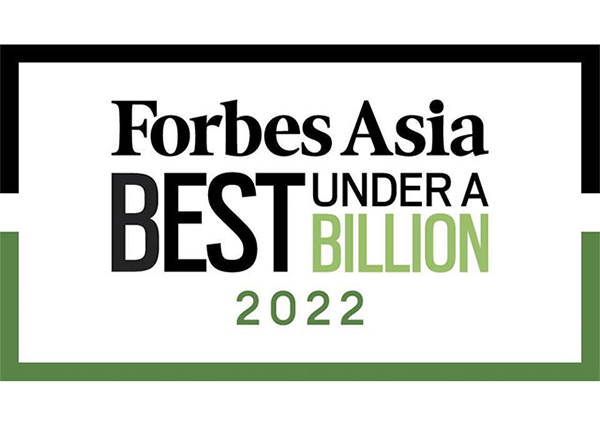Mega features in Forbes Asia’s best under a billion for a second consecutive year

This story is part of Forbes’ coverage of Asia’s Best Under A Billion 2022, which highlights 200 Asia-Pacific public companies with less than $1 billion in sales and consistent top- and bottom-line growth. See the full list, sorted alphabetically, here.
As Covid-19 restrictions ease across the Asia-Pacific and people adapt to the new normal, this year’s annual Best Under A Billion list highlights the shift to discretionary spending. While healthcare and pharmaceutical-related companies were standouts last year, the post-pandemic return to daily life has benefitted apparel makers, mall operators, restaurants, consumer electronics and entertainment companies, among others.
This year’s list includes 75 returnees from the prior year, reflecting their resiliency in a fast-changing environment, such as Mega Lifesciences, which has made Best Under A Billion for a second consecutive year.
ABOUT MEGA LIFESCIENCES
Mega Lifesciences manufactures, markets and distributes medications and nutritional supplements. The company has manufacturing facilities in Australia and Thailand. It was founded in 1982 and is headquartered in Bangkok.
METHODOLOGY
This list is meant to identify companies with long-term sustainable performance across a variety of metrics. From a universe of 20,000 publicly traded companies in the Asia-Pacific region with annual sales above $10 million and below $1 billion, these 200 companies were selected. The companies on this list, which is unranked, were selected based on a composite score that incorporated their overall track record in measures such as debt, sales and earnings-per-share growth over both the most recent fiscal one- and three-year periods, and the strongest one- and five-year average returns on equity. Aside from quantitative criteria, qualitative screens were used as well, such as excluding companies with serious governance issues, questionable accounting, environmental concerns, management issues or legal troubles. State-controlled and subsidiaries of larger companies were also excluded. The criteria also ensured a geographic diversity of companies from across the region. The list uses full-year annual results, based on the latest publicly available figures as of July 11, 2022.

